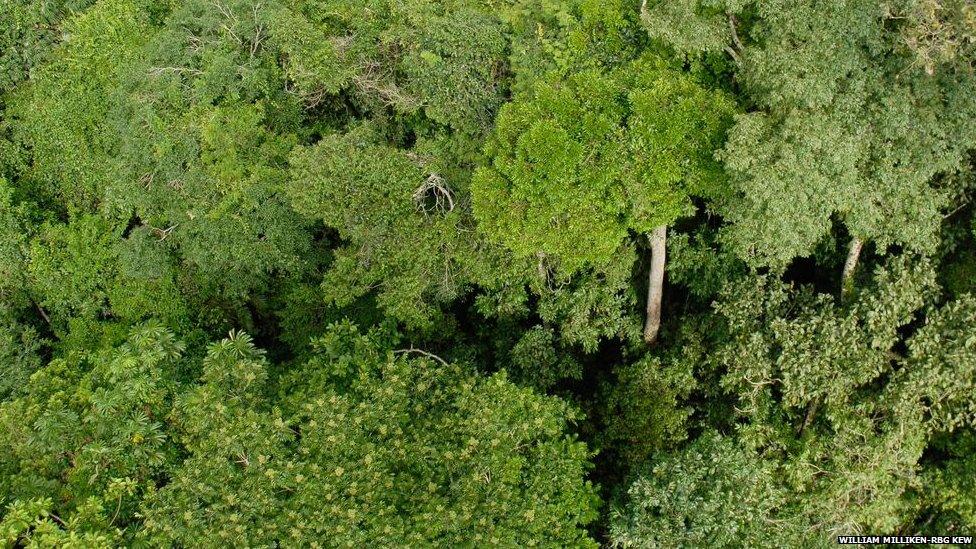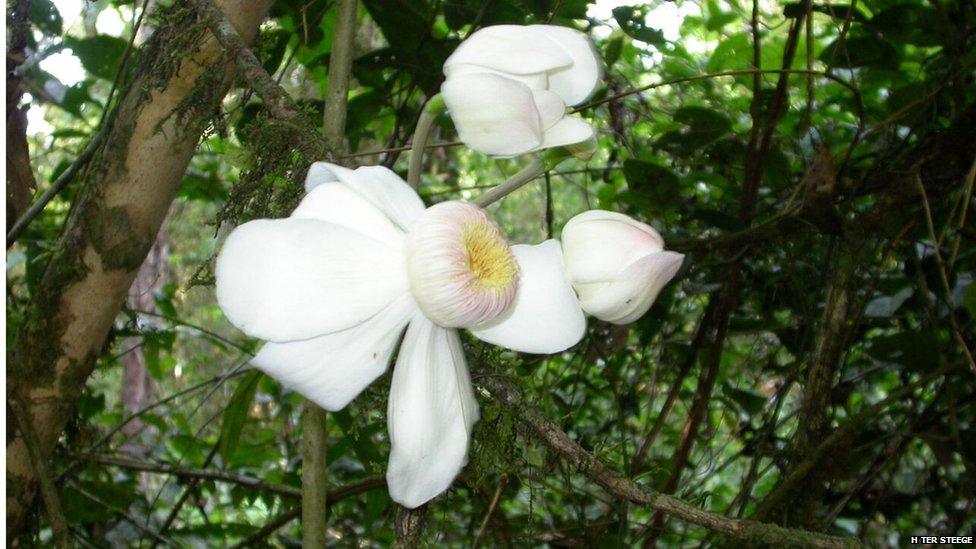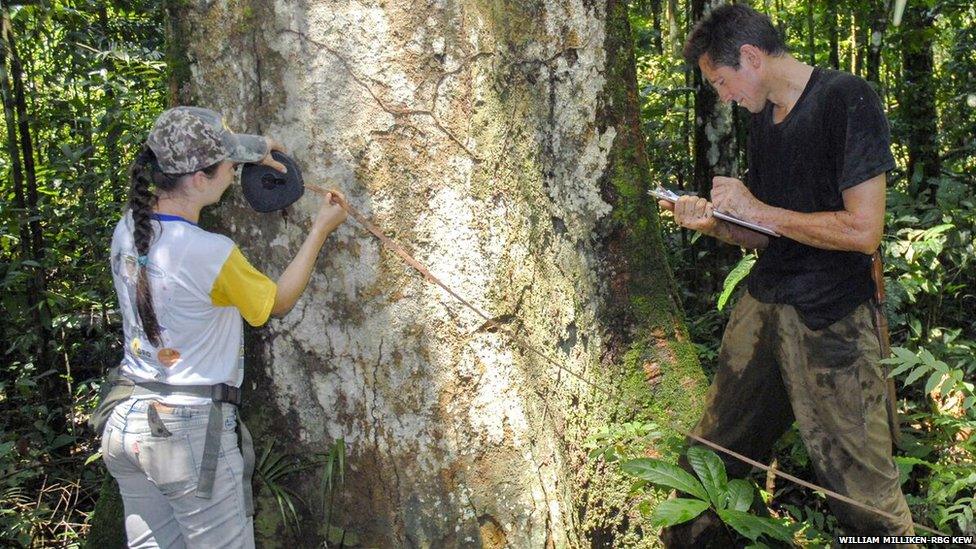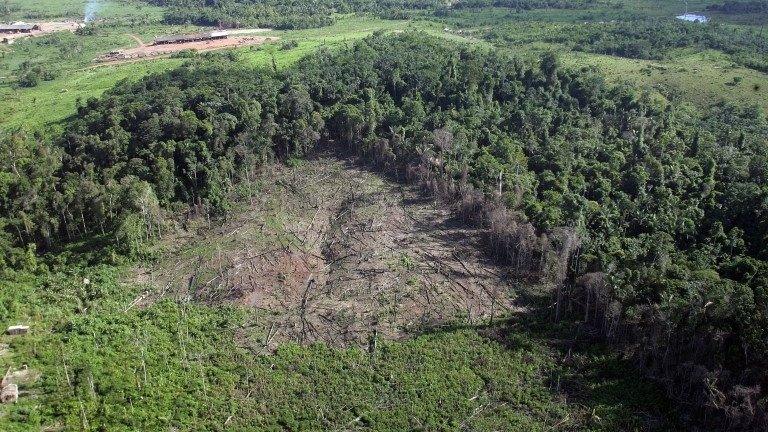Half of all tree species in Amazon 'face extinction'
- Published

Forest canopy in Mato Grosso, Brazil
More than half of all tree species in the Amazon face extinction, warn international scientists.
According to new data, up to 57% of all Amazonian trees may already fit the criteria of being globally threatened.
If confirmed, the estimates would raise the number of threatened plant species on Earth by almost a quarter.
Forest cover in the Amazon has been shrinking for decades, but little is known about the impact on individual plant species.
The trees at risk include iconic species like the Brazil nut tree, food crops such as cacao, the source of chocolate, as well as rare trees that are almost unknown to science.
The research, published in the journal, Science Advances, external, compared data from almost 1,500 forest plots with maps of current and predicted forest loss to estimate how many tree species have been lost and how many are likely to disappear by the middle of the century.
It found that the Amazon - the world's most diverse forest - could be home to more than 15,000 tree species.
Of these, between 36% and 57% are likely to qualify as being globally threatened under the IUCN Red List of Threatened Species criteria.
Prof Carlos Peres from the University of East Anglia's School of Environmental Sciences in Norwich is one of 158 researchers from 21 countries who worked on the study.
He said there was a big gap in knowledge about all the plants and animals in the Amazon, from trees and ferns to bats and birds.
"Our research estimates that more than half of all species may face extinction," he said.
"Fortunately protected areas and indigenous territories now cover over half of the Amazon basin, and likely contain sizeable populations of most threatened species. "

The petals of Gustavia hexapetala in Suriname

A forest survey in Brazil
He said parks and reserves - which face "a barrage of threats - from dam construction and mining to wildfires and droughts" - will prevent extinction of threatened species only if they are properly managed.
"In a sense this is a call for more effort into the 'last chance saloon' to discover this diversity before it goes inevitably extinct," said Prof Peres.
William Laurance from James Cook University in Australia, who also contributed to the study, added: "Either we stand up and protect these critical parks and indigenous reserves, or deforestation will erode them until we see large-scale extinctions."
The IUCN Red List of Threatened Species, external is regarded as the most comprehensive, objective global approach for evaluating the conservation status of plant and animal species.
Follow Helen on Twitter, external
- Published11 September 2014
